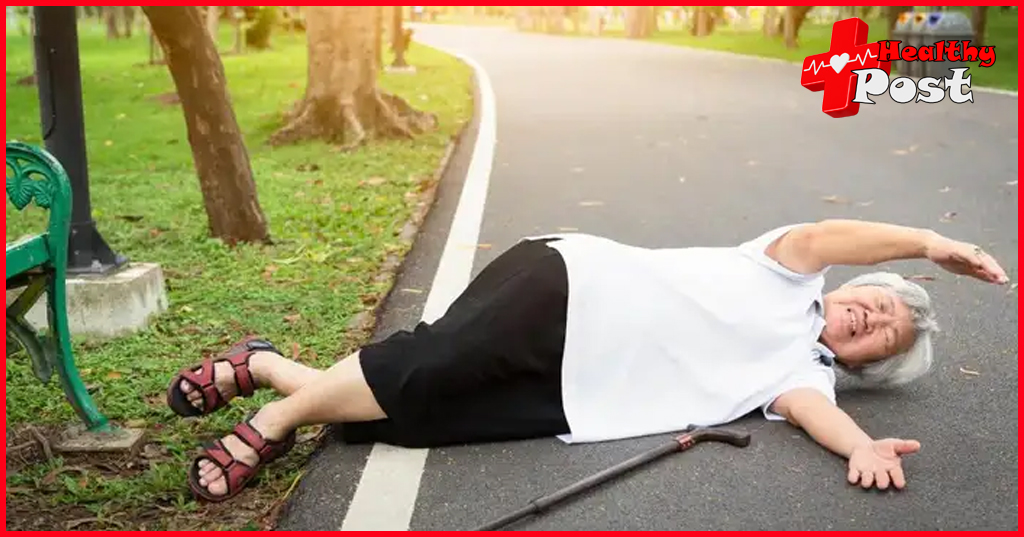
A brief discussion on the factors causing falls in the elderly and the strategies to prevent falls
Due to the aging of the population, the physical and mental health and daily care problems of the elderly will cause a series of problems. Such as heavy medical and economic burdens on society and families. Falls are the main cause of disability, incapacity and death among the elderly. Falls pose a great threat to the health and self-care of the elderly. If the risk of falls of the elderly can be predicted in real time. Scientific methods can be use to reduce the risk of falls of the elderly. It will have important positive significance for reducing the burden on families and society. It improving the quality of life of the elderly.

01 Factors that cause falls in the elderly
Physiological factors
The decline in motor system function, especially the weakening of muscle strength, is the main factor. Causing the decline in walking ability of the elderly. Among them, the obvious decline in quadriceps muscle strength is an important factor causing falls.
Disease factors
As people age, they are more likely to get sick. Many diseases often increase the risk of falling in the elderly. For example, Alzheimer’s disease will directly lead to a decline in the elderly’s ability to take care of themselves and cognitive function. Thus affecting their walking function; cardiovascular disease is usually accompanied by dizziness and physical exhaustion. And diabetes combined with peripheral neuropathy causes patients to have diabetic foot. Imbalance in lower limb muscle strength and muscle tension leads to an increased risk of falling; cerebral thrombosis, Parkinson’s disease, inner ear vertigo , cataracts, cerebellar dysfunction and other diseases make patients’ auditory and visual balance function poor, seriously affecting their motor ability; rheumatic joint disease , cervical and lumbar spine disease, osteoporosis can cause limb movement disorders, weakened muscle strength, and increase the risk of falling.
Drug factors
As the elderly are more likely to get sick. Many of them are more likely to take medication on a daily basis. Studies have found that taking anesthetics, hypnotics, antidepressants, antihypertensive and diuretic drugs, vasodilators , vitamins, calcium supplements, etc. may affect consciousness, spirit, vision, gait, balance, blood pressure, and cause patients to fall. Among patients who fall, 71.43% take medication . At the same time, the more types of medications you take, the greater the possibility of falling.
Psychological factors
Psychological factors may also increase the risk of falling. Elderly people may be overly anxious. Such as worrying about the financial burden. They will impose on their children and the increase in care costs. They may be overly nervous about their existing illnesses, or they may be under mental stress. Some elderly people may not be confident in their ability to walk and may worry about falling. Especially for elderly people who have fallen before, the risk of falling will increase significantly.
Wearing and walking environment factors
(1) Ill-fitting clothing , such as overly long or oversize clothes. Shoes, may reduce the elderly’s sense of balance and negatively affect their limb movements while walking. Overly long pants may also cause the elderly to trip. In addition, overly large shoes, heels that are too high or too thin. Insufficient anti-slip coefficients on the soles can easily cause the elderly to fall.
(2) Research on sole materials found that regardless of the pattern design of the sole, the dynamic friction coefficient of rubber-soled shoes is greater than that of leather-soled shoes on different walking media. Factors such as the material and structural design of the sole and insole, the height, width and hardness of the heel, and the height of the upper are all considered to have a certain relationship with the walking stability of the elderly: the material and pattern design of the sole will affect the friction coefficient between the shoe and the walking medium, and a smaller friction coefficient will increase the risk of slipping; the height and width of the heel may affect the direction of the human body’s tilt and gait posture when walking on uneven roads; the hardness of the sole and the height of the upper will affect the body’s proprioception.
However, the above factors have different conclusions in different studies, and a widely accepted view is that the biggest cause of the risk of falling is walking barefoot or wearing only socks.
02 Precautions
Assessment of walking ability
(1) Quantitative evaluation methods: The evaluation of gait stability is often carried out through the kinematic and dynamic data of one or several steps (the main analysis parameters are: step speed, step width, foot contact time, ratio of support period to swing period , displacement of the center of gravity of the human body, flexion and extension of each joint of the lower limb, and abduction and adduction movement angle ). However, the experimental time of these methods is very short, the amount of data collected is limited, and they may not be able to evaluate dynamic stability well.
In recent years, scholars at home and abroad have used some time series analysis , nonlinear dynamics and other methods to evaluate the human body movement during the gait cycle, and have added evaluation methods in this field, including: ① Evaluation methods for walking stability without obvious external factors that cause falls (such as walking obstacles or slips): parameter variability, maximum Lyapunov index , detrended fluctuation analysis (DFA), Floquet multiplier ; ② Evaluation methods for walking stability with external factors that cause falls: extrapolated center of mass concept, gait sensitivity norm , and vector of foot placement estimator.
(2) Non-quantitative assessment: In walking tests, scales are also common methods for evaluating walking ability. Among them, the “up and go” timed test ( TUGT ) evaluates walking ability; the Berg Balance Scale ( BBS ) and the Balance Confidence Scale ( ABC ) evaluate the patient’s balance ability and fear of falling; the Tinetti Balance and Gait Scale is used to assess the risk of falls in the elderly.
Avoid factors that cause falls
According to the above-mentioned known factors that cause falls, the elderly and their families and caregivers should consciously try to avoid them. For example, for physiological factors, appropriate training can be recommended for the elderly based on individual walking assessment results. Studies have found that Japanese elderly people have stronger walking ability than their American peers. The reason is that American elderly people sit for much longer than Japanese elderly people, so their quadriceps muscle strength is weaker.
Therefore, it is recommended that elderly people with certain mobility should actively exercise to strengthen muscle strength and motor system function; for factors that are not easy to change, such as medication and illness, it is necessary to weigh the individualized walking ability assessment results, comprehensive physical condition, and daily activities, consult a doctor to determine the dosage of medication, and strengthen the daily care of the elderly; for psychological and external environmental factors, it is necessary to educate and counsel the elderly psychologically so that they understand the relationship between related factors and falls, so as to consciously avoid them.

Strengthening the ability of the elderly to resist falls through training
In recent years, many experimental studies have shown that the elderly can improve their ability to resist falls through specific training methods. For example, the elderly fancy dance, which integrates body exercises , aerobics, radio gymnastics, sports dance. Double cooperation, is combine with lower limb strength training. After 12 weeks of training, 6 times a week, and 1 hour of training each time. The stride length and balance beam walking time of 120 elderly people with an average age of 70.5 years have been significantly improve; the time for walking 500 meters has been significantly shortened.
The changes in these parameters indicate that the elderly fancy dance can improve the walking ability of the elderly. The above three parameters are also often use as predictive parameters for the risk of falling. Therefore, to a certain extent, it also suggests that this training has a positive effect on the elderly’s ability to resist falling. In addition, relevant studies have shown that the elderly fancy dance has a significant effect on the treatment of middle-aged and elderly patients with depression , so this training method also has a positive effect on avoiding psychological factors that cause falls.
Suspension training
In addition, experimental studies have found that suspension training has a positive effect on the walking ability and cardiopulmonary endurance of the elderly. Suspension training, as a strength training in an unstable state , can improve neuromuscular control function, and its main goals are to improve the body’s core strength and stability, increase joint mobility , and improve the body’s balance ability. It is a training method that has gradually emerged in recent years and has been widely use in the fields of sports training and rehabilitation medicine.
Through long-term, low-load suspension training methods targeting the hip joint and waist and back joint muscles, standing hip raise, standing forward leaning, supine hip raise, prone hip flexion and other suspension training methods, the average age of 70 years old, without lower limb injuries, after 6 weeks, 4 times/week, 60 minutes/time training, the stride, balance beam walking time and 400m walking time and other indicators were significantly improved compared with the time of selection, indicating that suspension training can significantly improve the muscle strength and balance function of elderly subjects , thereby promoting their walking ability and reducing the risk of falling.
By combining lower limb strength training with lower limb coordination training , and integrating deep squat training, weighted heel raise training, weight calf raise training, weight calf retraction training, and change of direction crossover walking training, the elderly’s ability to resist falls can be more significantly improve compare to single strength training or balance training .


3 thoughts on “A brief discussion on the factors causing falls in the elderly and the strategies to prevent falls”